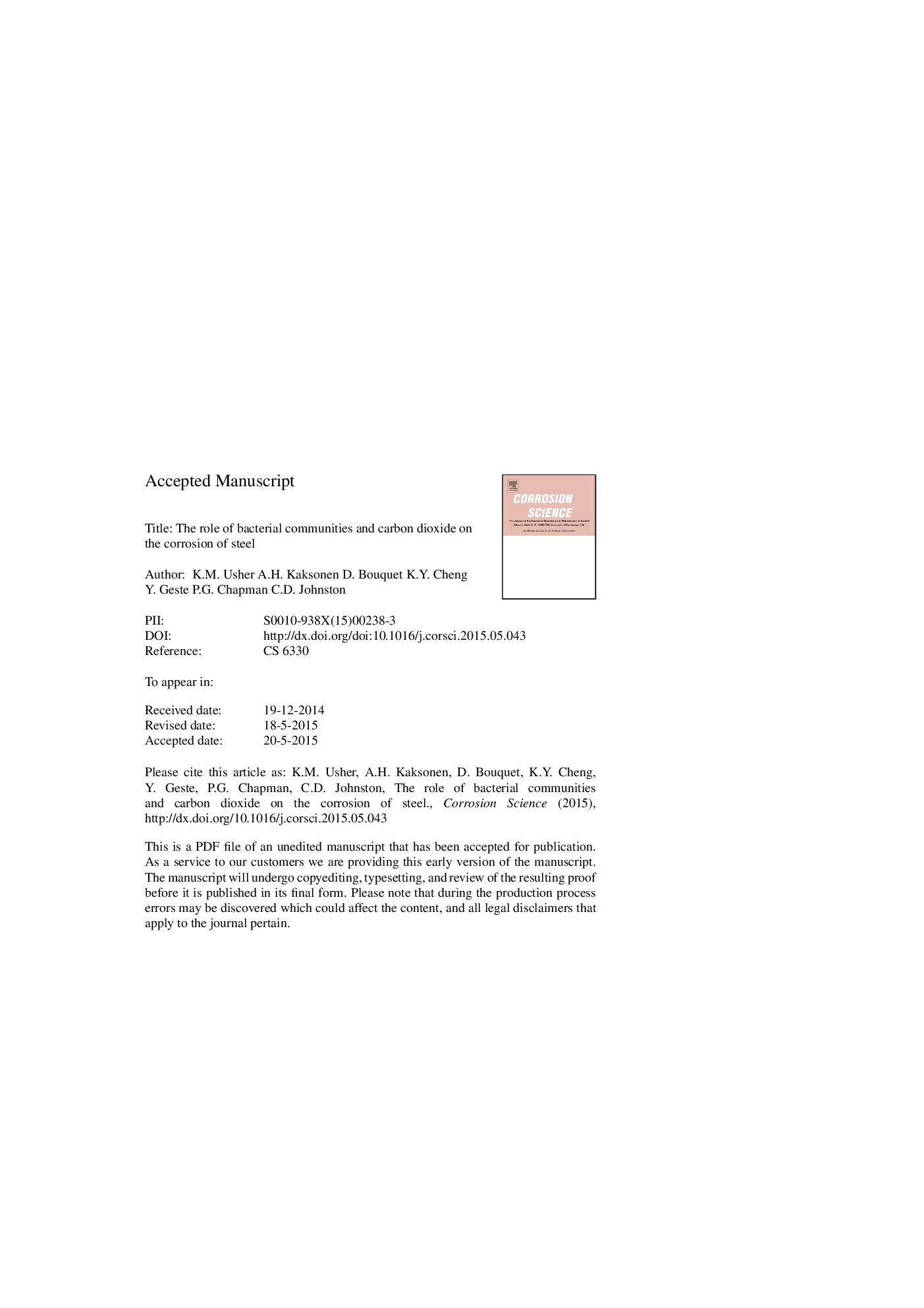| Article ID | Journal | Published Year | Pages | File Type |
|---|---|---|---|---|
| 7895380 | Corrosion Science | 2015 | 34 Pages |
Abstract
Natural microbial communities were grown anaerobically with steel as the electron source and CO2 the electron acceptor and carbon source, without organic carbon and typical electron acceptors. The cultures increased corrosion by up to 45.5% compared to sterile controls in two months. Pyrosequencing showed the presence of sulphate reducing bacteria (SRB), sulphur reducing bacteria (S0RB) and acetogens likely growing in a syntrophic relationship where SRB extracted electrons from iron, acetogens accepted electrons and reduced CO2 to acetate, which served as carbon source for SRB and/or S0RB. The SRB Desulfovibrio mexicanus comprised up to 90.1% of the community.
Related Topics
Physical Sciences and Engineering
Materials Science
Ceramics and Composites
Authors
K.M. Usher, A.H. Kaksonen, D. Bouquet, K.Y. Cheng, Y. Geste, P.G. Chapman, C.D. Johnston,
